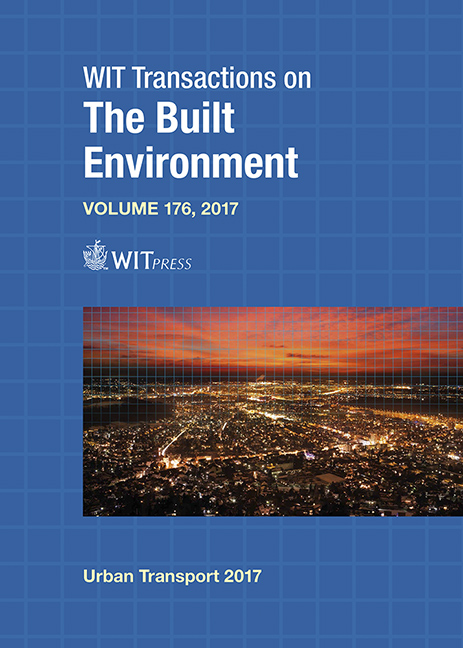URBAN MOBILITY AND INFLUENCE FACTORS: A CASE STUDY OF PRAGUE
Price
Free (open access)
Transaction
Volume
176
Pages
11
Page Range
207 - 217
Published
2017
Size
439 kb
Paper DOI
10.2495/UT170181
Copyright
WIT Press
Author(s)
LADISLAVA FIALKA SOBKOVÁ, MICHAL ČERTICKÝ
Abstract
Walking is the most natural human movement. A lack of walking on a daily basis causes a number of lifestyle diseases including diabetes, obesity and cardiovascular diseases. These medical complications are increasingly widespread by urban lifestyle. Comfort of non-physical activity allowed by developed transportation systems leads to the pandemic of physical passivity. Our case study is based on the data set of daily activity schedules of 89,948 urban citizens extracted from agent-based simulation model of multimodal mobility of Prague. The schedules contain the exact routes, transport modes and durations of all the trips made by the public transport users. The analysis proves that most of the walking trajectory is composed of the necessary daily routine: walk from home to the public transport station, walk from a different station to the workplace and back. This trajectory covers on average 85.4% of daily walking distance. With increasing age, the percentage is slightly higher. An average inhabitant of Prague, Czech Republic walks 3.1 km per day, which is considered a low daily physical activity. Residents are considered active, if they walk more than 6.6 km on an average day. We did not find a statistically relevant correlation with the marital status or education. However, a correlation with financial income is apparent: an average walking distance is higher in households with income higher than 1,130 EUR per household member. That could be caused by the fact that higher income Prague families tend to reside in the areas with lower building density and worse public transport connectivity. The daily travelling routine constitutes a majority of daily physical movement, which seems to be insufficient at the moment.
Keywords
walking, public space, transport, agent-based modeling, activity-based modeling, public health





